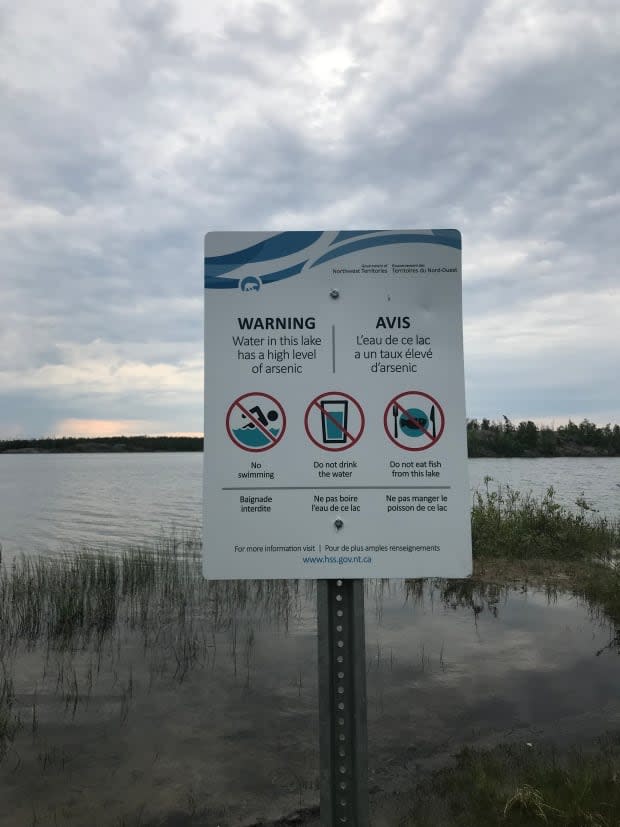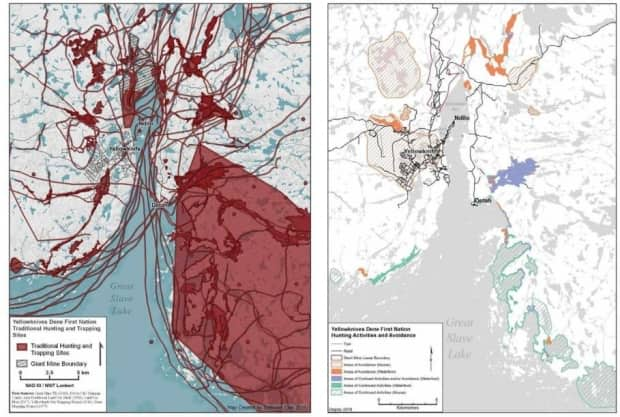New study shows 'low risk' to public health 70 years after Giant Mine's toxic legacy

A new risk assessment on the toxic legacy of Giant Mine that looks at how arsenic contamination affects the land and water in and around Ndilo, Dettah and Yellowknife, shows public health risk is generally in the "low range."
On Thursday evening, researchers and project leads held an information session to share the results of the assessment, and help inform how people can safely fish, swim, pick berries and harvest.
The new study "aligns with the current advice that's out there from public health," said Alex Lynch, who is a senior adviser on the Giant Mine Remediation Project with the territorial environmental department.

Some lakes around Yellowknife fall in the category where it is safe to swim and fish, like Long Lake, Cameron River and Grace Lake.
Other bodies of water indicate a "significant" or "elevated" level of arsenic contamination, according to a map provided on the territorial government's website.
Some of those areas include Frame Lake, Rat Lake and Jackfish Lake, where arsenic quantities exceed 52 parts per billion (ppb). Anything above 10 ppb is considered unsafe to drink, but health officials do not recommend drinking any untreated water.
That means people should not swim in those areas nor should they harvest berries and fish, but people can still boat, canoe or hike.
According to the territory's Health department on its website, research indicates that "there is little uptake of arsenic through the skin, so occasional exposure through wading is not considered a significant health risk."
One of the project leads said the public health risk is generally in the low range.
It's "very similar to going to get a medical procedure, such as having your teeth x-rayed once a year with the dentist or going for a C.T. scan," said Harriet Phillips, who is a manager at CanNorth.
Phillips said "it's really a good news story for people who live in Yellowknife, Ndilo and Dettah," because the results indicate that people can continue to go on the lake, go fishing, do recreational activities and maintain traditional land use.

The study comes after concerns voiced by Yellowknives Dene First Nations (YKDFN) about how the Giant Mine has impacted their way of life by contaminating their traditional lands.
For 70 years, Giant Mine produced over 237,000 tons of arsenic trioxide, caused by the process to access the unique deposits of gold.
YKDFN is expecting an apology and compensation from the federal government for displacing their people and infringing on protected Treaty rights.
For the most up to date information on contamination risks and advisories refer to the territory's Health and Social Services website.
There is a brochure which explains various health concerns, along with a question and answer sheet.

 Yahoo Movies
Yahoo Movies 